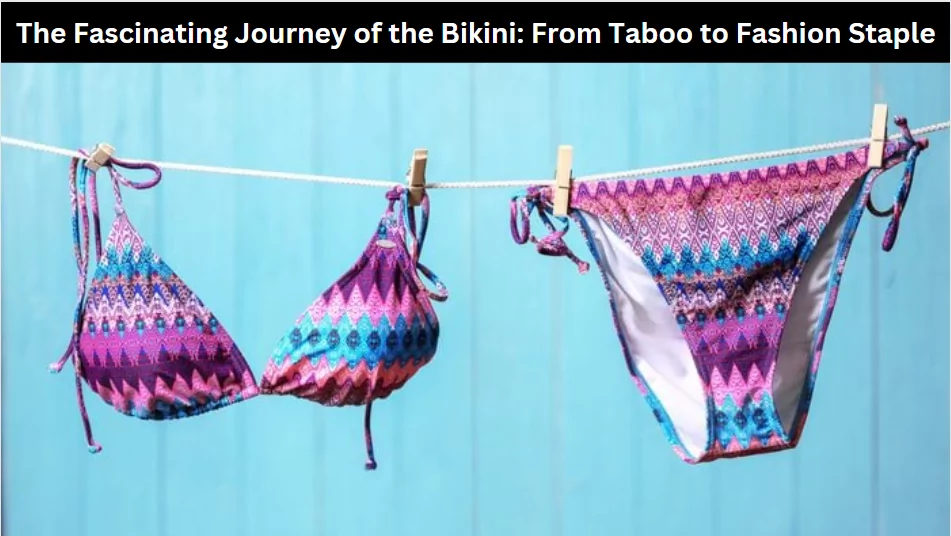The two-piece is a fashion item that has generated more than its fair share of attention over the years. From its controversial origins to its standing as a beachwear staple, the bikini has experienced an intriguing transformation. But what is it about this skimpy garment that continues to captivate and divide opinions?
The Two-Piece’s Place in Popular Culture: From Silver Screen to Magazine Covers
This garment has had a significant presence in popular culture since its inception. Films like “Dr. No,” featuring a young Ursula Andress emerging from the ocean in a white ensemble, played a pivotal role in making it a symbol of glamour and allure. Magazine covers, with supermodels donning the latest designs, further solidified its place in mainstream media. These portrayals played a huge role in normalising it, shifting its perception from scandalous to stylish. Furthermore, music videos and TV series from the ’90s to the present day often showcase celebrities in these suits, further ingraining its significance in popular culture.
Environmental Impact: Sustainable Two-Pieces and Conscious Fashion
In recent years, the conversation surrounding fashion has evolved to consider environmental implications. The swimwear industry has not been exempt from this discourse. With the rise in awareness about plastic pollution, microplastics, and their effect on marine life, many brands have started producing these suits from recycled ocean plastics. This movement towards sustainable swimwear signals a notable shift in the fashion industry. The global push for sustainability has urged manufacturers to reconsider their methods, promoting the use of organic dyes and sustainable packaging.
The Design Diversity: More Than Just Strings and Triangles
One of the key reasons behind its enduring popularity is the variety of designs. Whether you prefer a halter-top, bandeau, or high-waist design, there’s something for everyone. The evolution of fabrics and patterns, such as animal prints and metallics, has also led to a wider array of choices. It’s not merely about aesthetics, either. Various designs cater to different body types, providing comfort and confidence for all wearers. With the rise of inclusive fashion, the industry has seen a broader range of sizes and shapes, ensuring that everyone feels represented and confident. Designers have become more experimental, incorporating elements like tassels, cut-outs, and unique textures.
The Functionality: Not Just For Sunbathing
While the primary function of a two-piece swimsuit is for water-based activities, it has transcended its initial purpose. Many individuals use the garment for various sporting activities, including beach volleyball, swimming competitions, and water aerobics. It is not uncommon to see variations of the two-piece adapted for specific athletic needs, adding a practical aspect to its fashion-forward persona. Apart from sporting events, these suits have found their way into wellness retreats and spa experiences, highlighting their versatility. The fabrics have evolved too, with UV-resistant and quick-drying materials entering the market. As a testament to its functionality, this swimwear has seamlessly blended the worlds of sport, relaxation, and fashion.
Two-Piece in Art: Depictions and Representations
Art, in its many forms, has often been used to depict, challenge, and celebrate cultural norms and trends. The swimsuit is no exception. Artists and photographers have utilised it as a medium to explore themes of femininity, empowerment, freedom, and sensuality. In the world of pop art, for example, artists like Roy Lichtenstein have drawn women in two-pieces to explore and sometimes critique societal obsessions with beauty and leisure. Photography, especially in the fashion industry, has showcased the two-piece as both a symbol of beauty and an instrument of empowerment.
Conclusion
The bikini has had a captivating journey, evolving from a taboo subject to an embraced fashion statement. Its enduring appeal lies in its versatility, design diversity, and the freedom it grants its wearers. While it may never fully escape the shackles of societal opinions, its status as an iconic garment is unquestionable. Whether you see it as a symbol of empowerment or an item of controversy, it is undeniably a fascinating subject that captures the complexities of fashion and culture.
